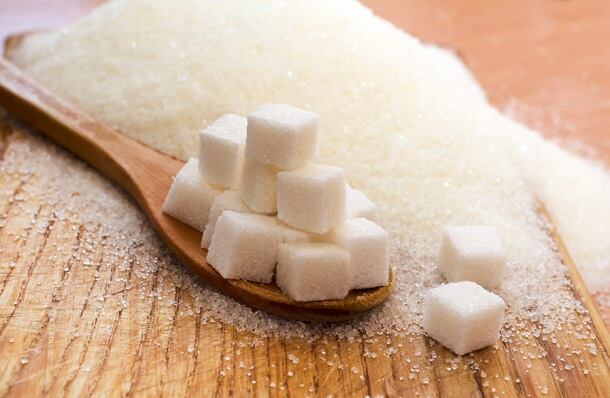“One third of Americans believe that sugars are the source of calories most likely to cause weight gain,” and “growing concerns regarding adult and childhood obesity and diabetes have led consumers to increase their scrutiny of sweetness in the food and beverages they consume,” Kerry notes in a recently released Sensibly Sweet white paper.
The paper is based on a survey of 760 Americans to assess their perceptions of various sweeteners and the role they play in different product categories. It revealed that 71% of consumers read the sugar content on ingredient labels and 46% strongly want to reduce their consumption of sugar.
Based on these perceptions, Kerry warns in the white paper that “consumers are now taking active steps to manage their sugar consumption,” by either cooking at home, controlling their portion sizes or in a worse-case scenario for the CPG industry, purchasing fewer packaged foods and beverages.
In particular, the research revealed 28% of shoppers are buying fewer packaged products, which could be compounded by 36% cooking at home more and 33% cutting back on portion sizes.
How to win back consumers
One way that manufacturers are trying to keep or win-back sugar-conscious consumers is by dramatically reducing the amount of sugar in their products, according to Kerry. It pointed out the number of new products launched with a ‘low/no/reduced sugar’ claim increased 45% in 2017 compared to five years ago.
Another strategy is to switch the type of sweetener used to one that is either lower calorie or perceived as healthier, the white paper notes. While not as popular as the prior approach, Kerry notes that the number of products carrying a ‘no artificial sweeteners’ claim has increased 4.4% from a year ago and products with a ‘no added sugar’ claim are up 2.6% from a year ago.
For this approach to succeed, Kerry suggests that manufacturers need a more nuanced understanding of what shoppers think about different sweeteners and how the category in which they are used matters.
Based on the survey, Kerry found that Americans have a significantly higher preference for ‘natural’ sweeteners. Honey came in as the most preferred natural sweetener with 64% of survey respondents, followed by sugar, cited by 59% of respondents, and maple syrup, which 31% of shoppers preferred.
The least preferred sweeteners across the board were ones that were perceived as artificial or were unfamiliar, including erythritol, acesulfame K and monk fruit.
Stevia awkwardly fell in the middle with only 22% of consumers preferring it and only 46% perceiving it as a natural sweetener compared to monk fruit, which 77% of respondents perceived as natural but only 3% preferred, according to the white paper.
Other factors to consider
The amount and source of a sweetener that consumers tolerate or perceive as ideal varies based on the category, need state, portion size and other nutritional factors, such as calories and protein, according to Kerry.
For example, Kerry found consumers are most likely to buy products formulated with honey or sugar, with zero to 10 calories and eight to 10 grams of protein. On the other hand, shoppers are least likely to pick up products sweetened with brown rice syrup or sucralose, that have more than 100 calories per serving and have 16-20 grams of protein.
‘Taste remains paramount’
Despite increased awareness of the connection between sweeteners and health and wellness, Kerry found consumers remain unwilling to compromise on taste.
It notes that 55% of consumers want reduced sugar products to taste the same, while also offering “a clean label undertone,” which represents a challenge for manufacturers.
One solution is to skip sweet altogether and go after the 27% of shoppers who say they want to inherently less sweet products, according to Kerry’s research. These consumers tend to be older Millennials, it adds.
Support for this approach is further bolstered by the finding that 17% of shoppers say they have switched to salty or savory products as a way to reduce the amount of sugar they consume, and 17% who say they avoid sugar entirely, according to Kerry.
Four takeaways
Based on these results, Kerry suggests manufacturers maximize the opportunities presented by the sugar-reduction movement and minimize the risks by:
- Balancing sweetness with functionality – “Meeting consumer preferences might not always be viable,” given the functional benefits of sugar that are hard to replicate with other sweeteners, Kerry said. In this case, it recommends companies combine sweeteners with lower amounts of sugar to retain the functional properties, but reduce the total sugar content.
- Consider the product’s target demographic – Different consumer groups have different standards and if a product mainly targets Gen Xers who are more likely to prefer zero sugar the manufacturer might get away with using a different sweetener or level of sweetness than when making a product that targets another group
- Offer portion control – Offering smaller sizes can help consumers who do not want to compromise on sweetness or the type of sweetener still enjoy a product, while also reducing overall consumption
- Innovate with savory – Adding botanical, herbal or other savory flavors to what was once a sweet product not only cuts the amount of sweetener, but also appeals to consumer demand for new experiences and flavor combinations.




